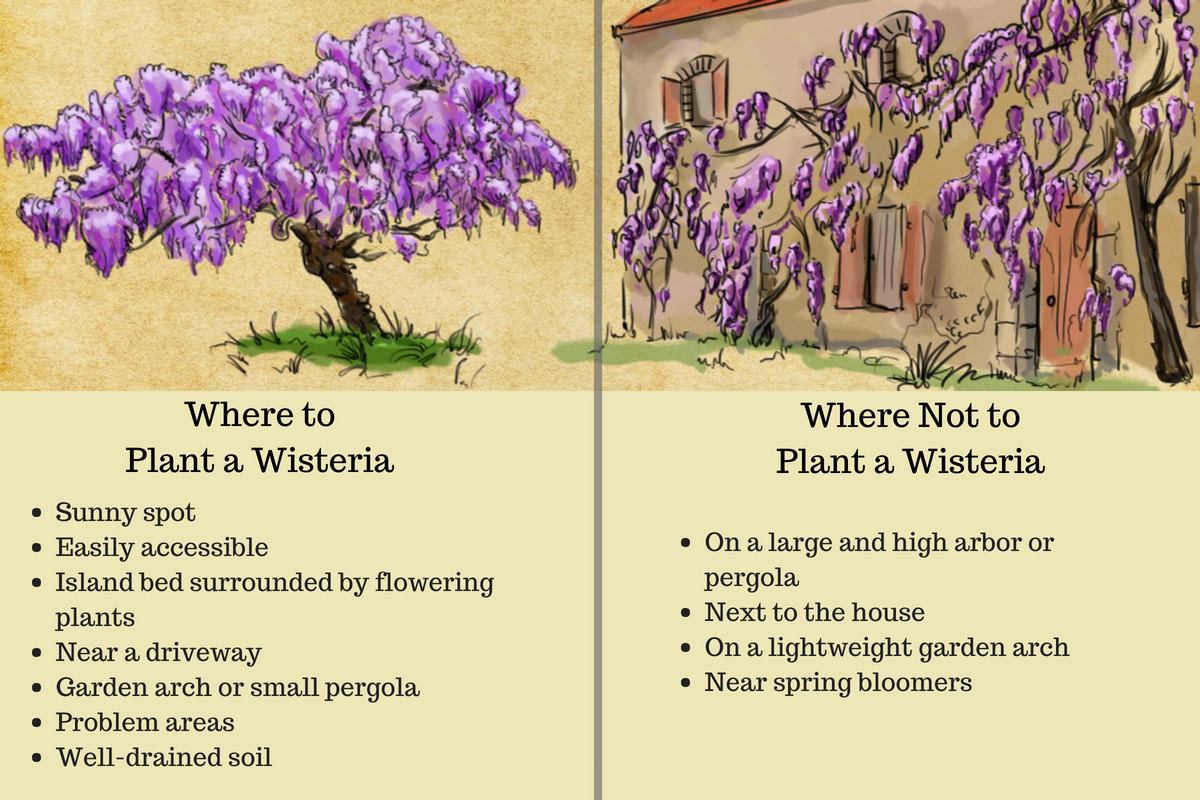How To Grow And Care For A Wisteria Plant
If you're looking for an eye-catching and fragrant addition to your garden, you can't go wrong with wisteria. Known for its stunning purple flowers that cascade in grape-like clusters, wisteria is a popular climbing plant around the world. But while wisteria can add beauty to any outdoor space, it's also a somewhat finicky plant that requires careful attention.

Plant Attributes
Wisteria is a member of the legume family and boasts more than ten species - the most popular of which is the Chinese wisteria, which is the one you've probably seen weaving its way up pergolas and trees.
These plants are native to China, Korea, and Japan, and they are known for their extremely fragrant flowers, which bloom from late spring to early summer. Wisteria can grow up to 20m long and 10m wide, so make sure you have enough space for it to grow. It can climb up walls, trellises, arbors, and pergolas without any assistance, thanks to its twining stems.
Wisteria thrives in full sun and will blossom in zones 4-9, so make sure you're planting it in the right climate zone. It can grow in any soil type, but it prefers loose, well-drained, and nutrient-rich soil. For best results, add compost to the soil before planting.
Plant Care
Maintaining a healthy wisteria plant requires some effort, but the payoff is worth it. Here are some tips to get you started:
- Watering: Wisteria needs a lot of water to grow, especially during the flowering season. Make sure the soil is moist but not waterlogged. Reduce watering in the late fall and winter months to avoid root rot or mold.
- Fertilizing: Fertilize wisteria in the spring, just as the leaves emerge. Use a slow-release fertilizer rich in phosphorus and potassium to promote blooming.
- Pruning: Pruning is a crucial part of wisteria care, and it should be done twice a year. Once in the winter to shape the plant and control its growth, and once after flowering to remove old, woody stems and encourage new growth.
- Training: Wisteria can be trained to grow in any direction, so make sure you're directing the vines to avoid any unwanted growth.
- Mulching: Mulch your young wisteria plant to keep the soil moist and prevent weed growth.
Pruning
Pruning wisteria is essential to maintain its shape, promote blooming and prevent it from overtaking your garden. Here are some tips for successful wisteria pruning:
- Prune your wisteria twice a year: Late winter and after flowering.
- Before pruning, assess the shape and size of the plant and the space available.
- Remove any dead or diseased wood, as well as any old, woody stems.
- If you're shaping the plant, cut back any overhanging shoots to achieve the desired size and shape.
- Wisteria blooms on new wood, so don't be afraid to prune back aggressively to encourage new growth.
Propagation
If you want to propagate your wisteria, there are two main methods: seed propagation and cutting propagation.
- Seed propagation: This method is more time-consuming and less successful than cutting propagation. Collect the seeds from the dried pods, soak them overnight, and plant them in containers filled with well-draining soil. Keep them moist and warm and wait for the germination to occur.
- Cutting propagation: This method is more successful than seed propagation and is done in late summer or early fall. Cut a 15cm section of the new growth from the mother plant, remove the leaves from the bottom two-thirds of the cutting and dip it in rooting hormone. Plant it in a pot filled with well-draining soil, and keep it moist until the roots form.
Potting & Repotting
Wisteria plants can be grown in containers, but they require careful attention to thrive. Here are some tips on potting and repotting wisteria:
- Choose a container that is at least 50cm in diameter and 60cm deep.
- Use a potting mix that is well-draining yet moisture-retentive.
- Place the container in a sunny location, and make sure the plant gets enough water.
- Repot your wisteria every three years, and prune the roots before repotting to keep the plant from becoming rootbound.
Common Pests & Plant Diseases
Wisteria is a hardy plant that is relatively pest and disease-resistant. However, it's still susceptible to some issues, such as:
- Aphids: These small insects can infest the plant and suck the sap from the leaves, causing them to wilt and die. Use a mild soap and water solution or an insecticidal spray to get rid of them.
- Fungal diseases: Wisteria is prone to fungal diseases such as stem cankers, powdery mildew, and root rot. These diseases can be prevented by planting wisteria in well-draining soil, pruning dead wood, and avoiding overwatering.
- Caterpillars: These insects can cause severe damage to wisteria by eating the leaves and stems. Remove them by hand or use an insecticidal spray.
Common Problems
Despite its hardiness, wisteria can still face some issues if not cared for properly. These include:
- No Flowers: If your wisteria isn't blooming, it may be due to improper pruning, insufficient sunlight, or using the wrong fertilizer.
- Dry Leaves: Wisteria leaves can become dry and brown due to underwatering or heat stress. Make sure to water your wisteria adequately and provide some shade during the hottest parts of the day.
- Root Rot: Overwatering or poorly-draining soil can cause root rot in wisteria. If the soil is waterlogged or the leaves show signs of wilting, cut back on watering and improve the soil drainage.
By following these tips, you can grow a stunning wisteria plant that will become the centerpiece of your garden. Happy growing!



Post a Comment for "How To Grow And Care For A Wisteria Plant"